Ronda is a stunning mountaintop town set high above the El Tajo gorge. This was one of Ernest Hemingway’s favorite spots, and it’s bound to be one of yours too!
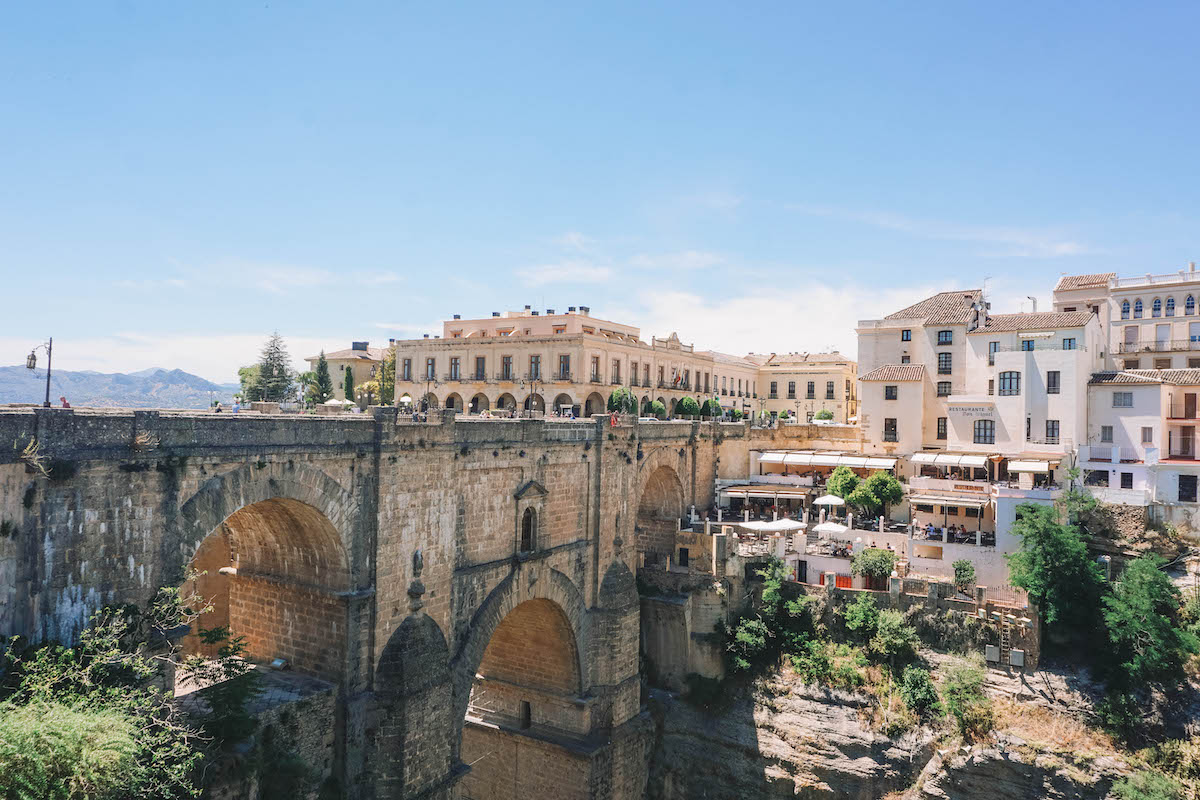
“Ronda is the place where to go, if you are planning to travel to Spain for a honeymoon or for being with a girlfriend. The whole city and its surroundings are a romantic set. … Nice promenades, good wine, excellent food, nothing to do.” This is how Ernest Hemingway described Ronda, Spain after one of his many trips to the region.
Never heard of the place? Neither had I before I began researching Andalusia.
Ronda is a small town in the Malaga province of Spain. The town is perched high above El Tajo gorge, with the new and old parts of the town connected via the triple-arched Puente Nuevo (New Bridge). Although small — the Old Town that can be traversed in about 15 minutes on foot — Ronda’s unique history and breathtaking views make it a must-visit town in Andalusia.
Famous figures such as Ernest Hemingway, Orson Wells, Rainer Maria Wilke, and James Joyce have flocked to Ronda to experience its beauty, and after having visited it myself I can safely say that it’s one of the most magical places I’ve been to.
This guide will share the best things to do in Ronda, Spain, plus provide an overview of the city’s history. A visit to the city of Ronda is a must while you’re in Andalusia!
Table of Contents
How to Get to Ronda, Spain
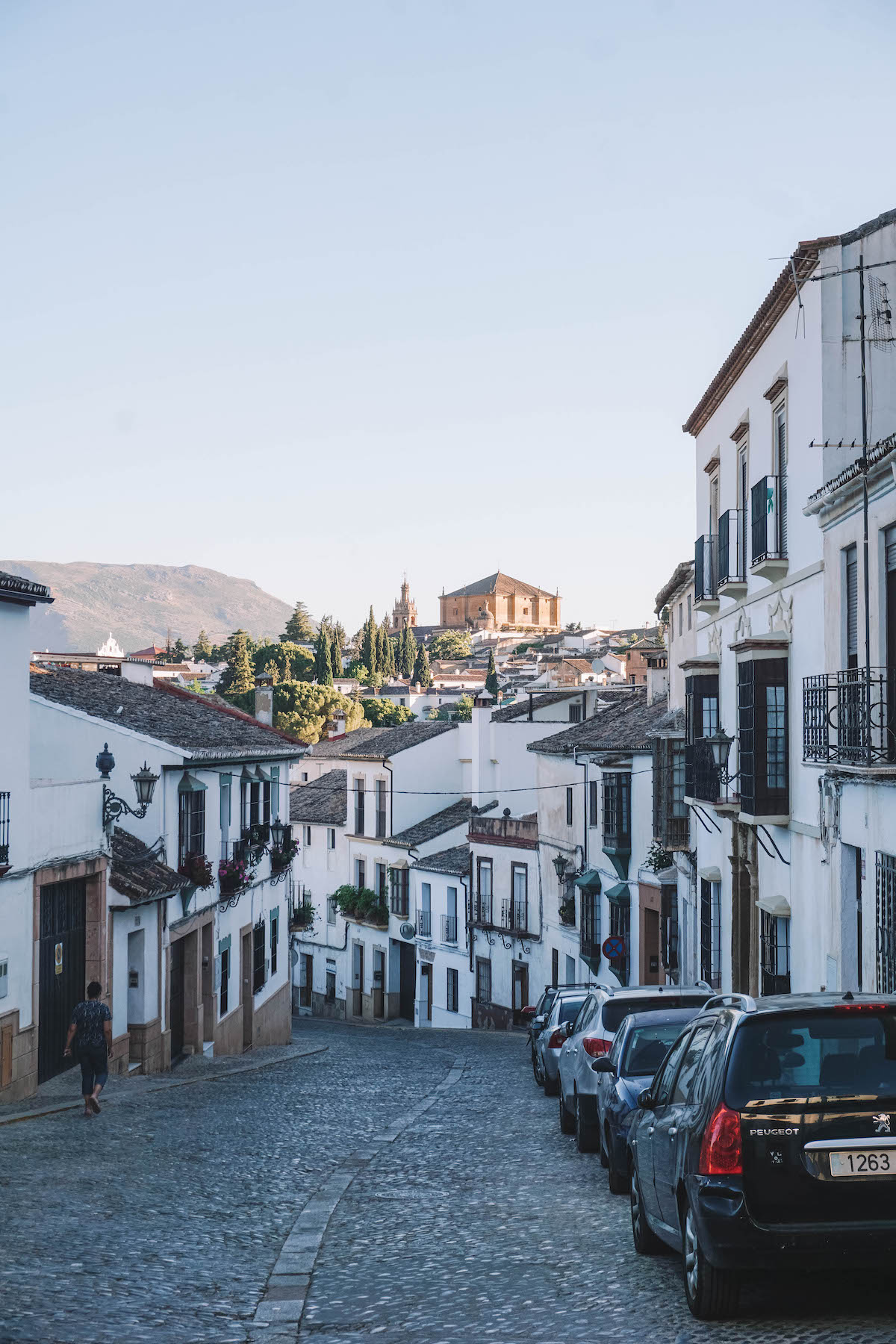
Where in Spain is Ronda? Ronda is a small town in the province of Málaga, Spain. It’s located in the Andalusia region of southern Spain.
Getting from Málaga to Ronda: The easiest way to get to Ronda is to take the train from the Malaga central station. You’ll have to change once, but the journey takes around 2 hours. If you have a car, you can drive to Ronda in about 90 minutes via the A-357 and A-367.
Getting from Seville to Ronda: The train from Seville to Ronda lasts roughly 3 hours and 30 minutes, and you’ll have to change once. Driving is your best option, as it takes just under 2 hours to reach Ronda.
Getting from Cordoba to Ronda: There’s a direct train from Cordoba to Ronda in the evenings that takes under 2 hours. Driving between the two cities takes a little over 2 hours via the A-45.
Map of the Must-See Attractions in Ronda, Spain
The BEST Things to Do in Ronda, Spain
For such a small town, there are a surprising number of things to do in Ronda. With that said, you won’t need more than an hour to see any of the Ronda attractions listed below so you can fill your visit with as many or as few activities as you’d like. There’s more to do than I’ve listed below, but these are the absolute must-see Ronda attractions.
I spent two full days in Ronda, but one day is plenty of time to see the main sights and get a good feel for the town. I enjoyed being able to relax over my lunch, read my book in pretty gardens, and generally take my sweet time exploring this historic town.
Also note that most of the attractions listed below come with epic views of the surrounding landscape. Ronda is nestled high above a deep gorge, so while it may sound like I’m waxing poetic about the views, trust me when I say they’re actually as amazing as I say they are.
1. Take a Walking Tour
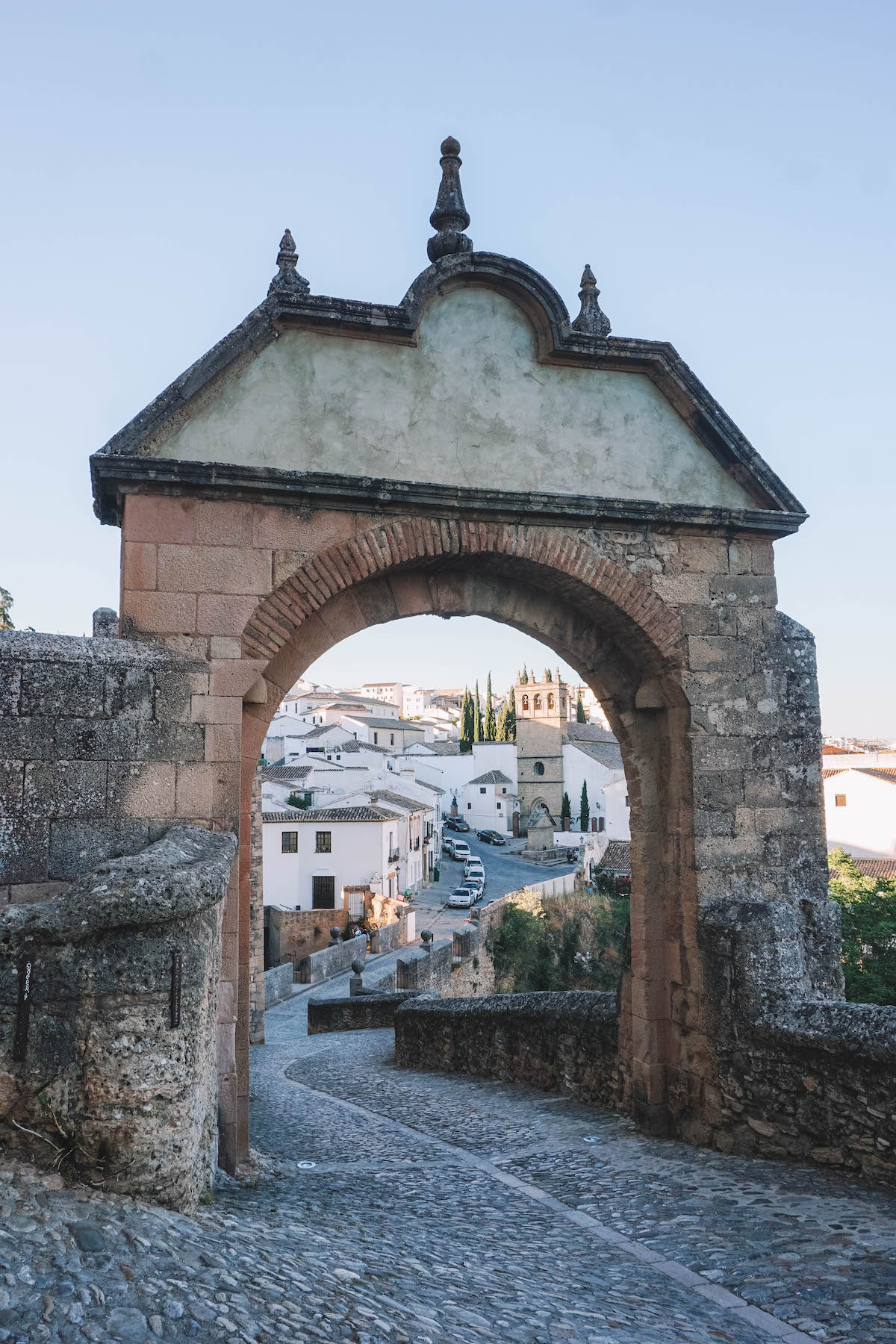
Ronda is a teeny tiny town, and unless you take a walking tour you’ll never properly grasp the history of this beautiful place. I paid for a 90-minute walking tour led by a guide from the tourism office (by the bullring).The tour cost around 10 Euros and was very well done!
Although I enjoyed the few museums in Ronda that I visited during my stay (more on them later!), ultimately they’re very small with minimal information on Ronda’s history. So, the walking tour was the main way I learned about Ronda, its culture, and how it fits into the broader history of Andalusia.
2. Tour Ronda’s Bullring
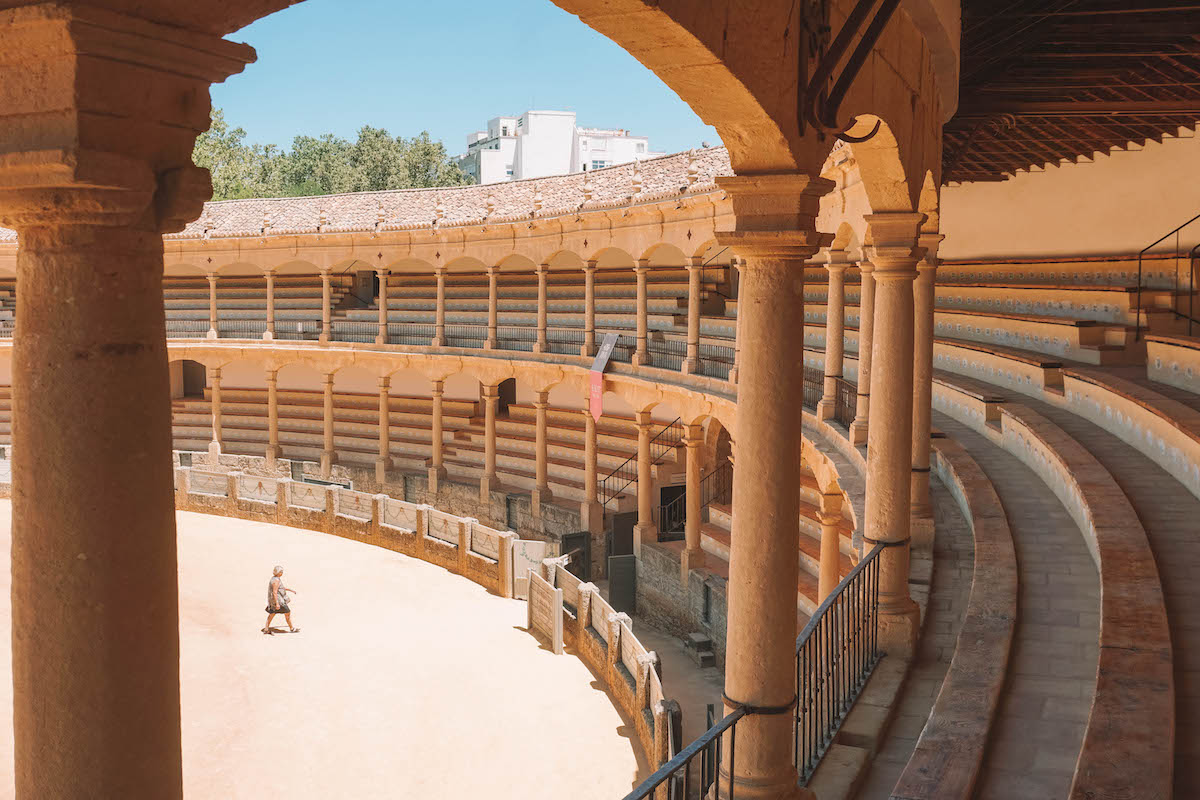
Ronda’s bullring (Plaza de Toros) is the oldest and largest bullring in all of Spain. (Although I also read that some historians disagree with it being the oldest, so I’m not sure which historical account is true).
The bullring was completed in 1785. In addition to the bullfights that occur each year, the Real Maestranza de Caballería de Ronda (RMR) is based here year-round. The RMR is the oldest horsemanship order in Spain, and also one of the most prestigious horse riding schools.
During the tour of the bullring, you’ll see where the RMR trains, the area where the bulls are kept before their fight, the arena, plus some small museums detailing the history of bullfighting and prominent bullfighters throughout Spain’s history.
I’ll admit, I didn’t do my research thoroughly before touring the bullring of Ronda. Before my visit, I didn’t realize that bulls were actually killed in a bullfight (I thought the matador just waved a flag at them to make them mad).
In hindsight, I probably wouldn’t put my money towards an institution that sanctions the brutal killing of animals in a public arena BUT regardless the self-guided tour with an audio guide was well done. Also, bullfighting is such a prominent part of Spanish culture so I’m glad to have visited the bullring in a way, because how else would I have learned firsthand about it?
3. Admire the View from the Mirador de Ronda
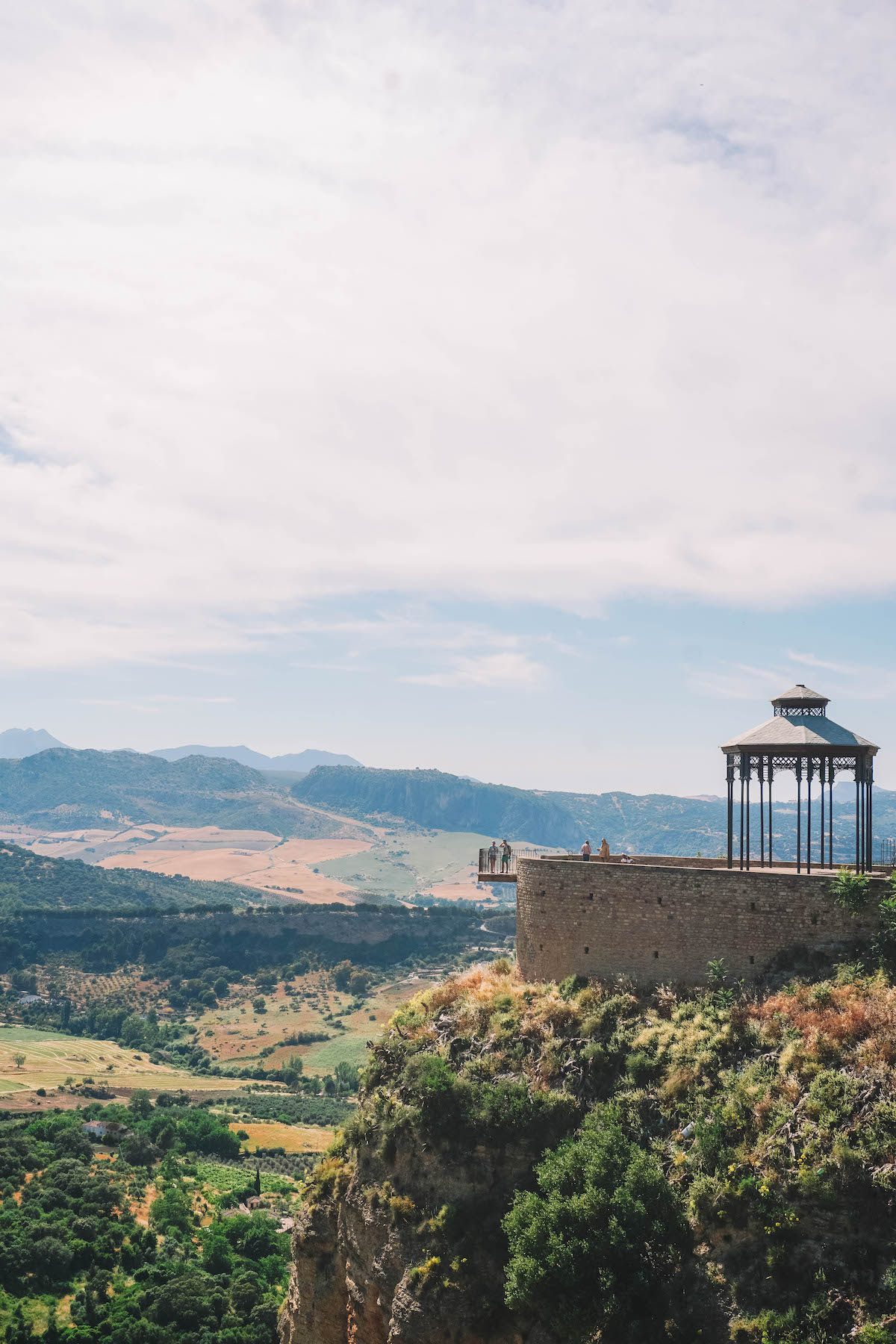
This is the first of many recommendations for scenic overlooks in Ronda, so buckle up! Ronda may be small, but it delivers big views. Its unique seat atop the El Tajo gorge means it has unparalleled views of the surrounding countryside and mountains — it’s breathtaking!
One of the must-see miradors in Ronda is the Mirador de Ronda. It’s located by the bullring in a small garden. This is a great spot to take a photo with your family or friends (or with your tripod!).
4. Cross the Puente Nuevo Bridge
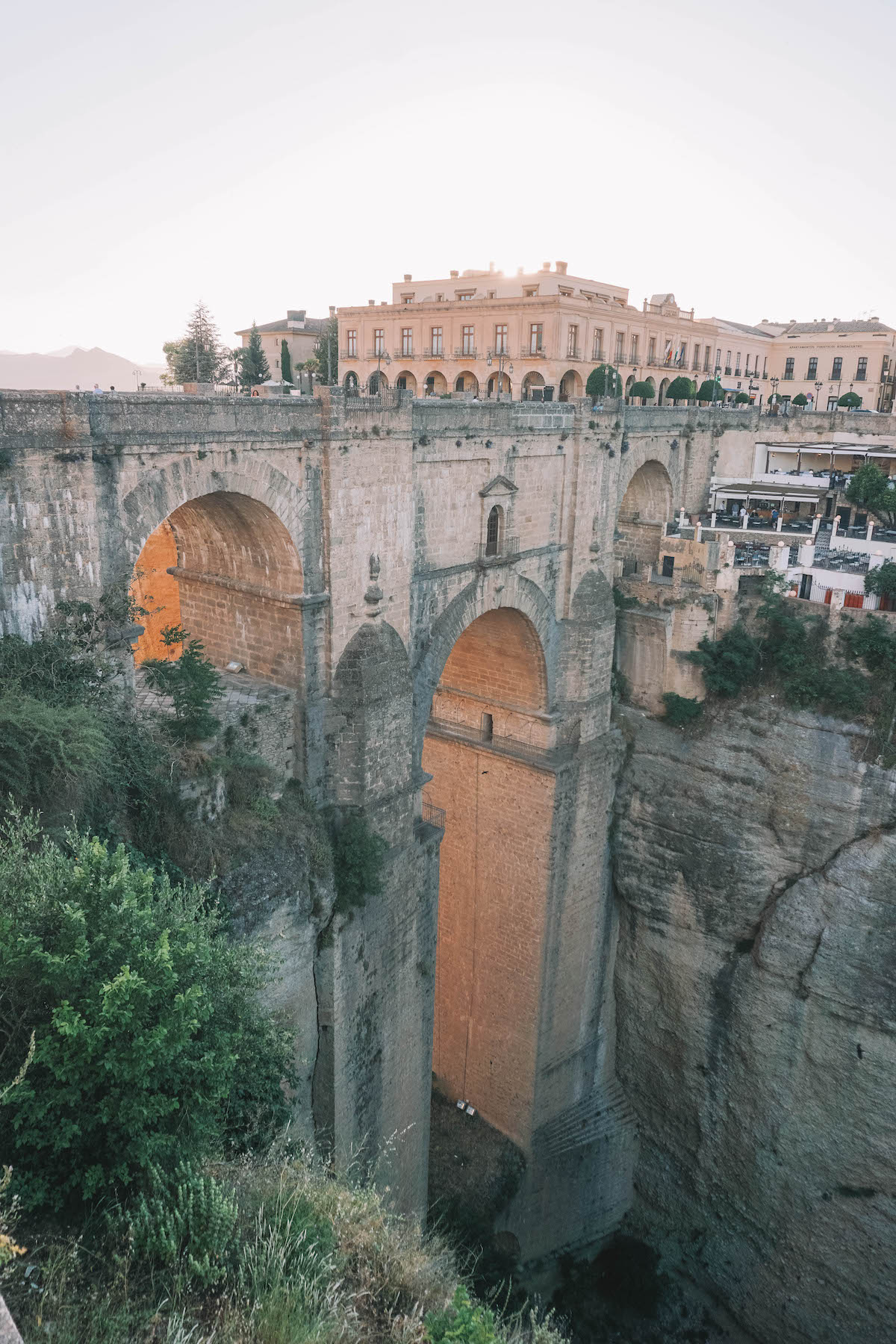
The main bridge in Ronda is the entire reason I planned my visit in the first place. It’s impossible to miss this spectacular feat of engineering as you cross from the modern part of the town to the oldest part.
The Puente Nuevo (New Bridge) rises 322 feet above the El Tajo gorge. The first version of this bridge was completed in the 1730s, but in 1741 the bridge collapsed, killing 50 people.
The building of the bridge you see today began in 1759 and was finally completed in 1793. And yes, the current Puente Nuevo is beyond safe!
As you cross the bridge, stop along the sidewalk and peer over the edge all the way down to the bottom of the gorge. It’s dizzying!
Once you cross the bridge, look carefully at the uppermost section of the central arch. There’s a small chamber located within the arch that used to be the town’s prison. You can pay to enter the chamber for an epic view of the bridge from within.
Tip: In Hemingway’s For Whom the Bell Tolls, there’s a scene where Facist sympathizers are thrown from the cliffs. Hemingway loved Ronda and allegedly used the bridge as inspiration for this scene.
5. Photograph Ronda’s Bridge
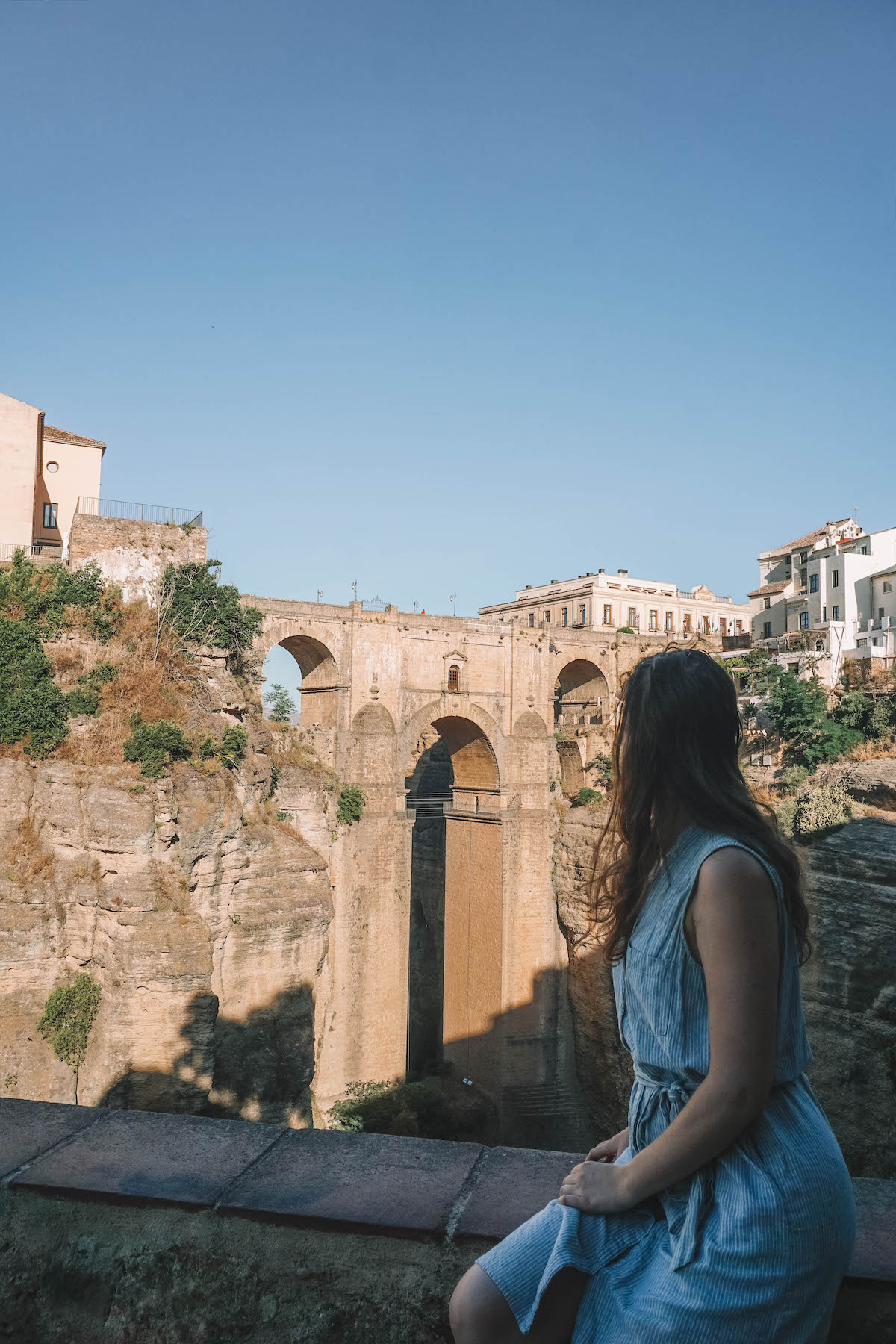
The must-see attraction in Ronda is the bridge, and I can guarantee you’ll want to photograph it from all angles! The best spots to photograph the Puente Nuevo in Ronda are:
- Mirador de Aldehuela
- Paseo de Kazunori Yamahuchi
- Mirador De Cuenca (view shown in the photo above)
- Mirador Puente Nuevo de Ronda (which you can either hike down to or take a taxi to. This overlook is located at the bottom of El Tajo gorge)
6. Find the Old City Gates
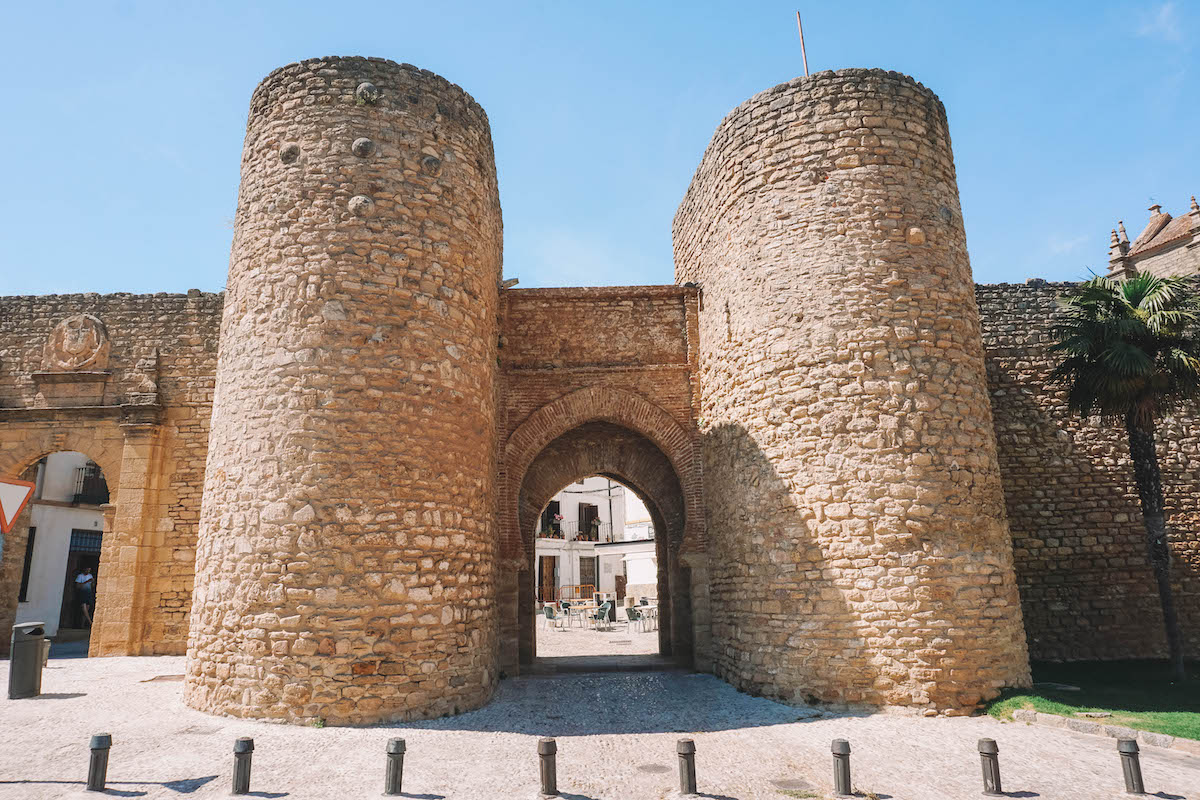
Ronda’s strategic position atop El Tajo gorge made it easier to defend and was a coveted city in Andalusia for that reason. Only two of the original city gates remain, Puerta de Almocábar and Puerta de la Cijara.
Puerta de Almocábar is the more impressive of the two. It was built in the 13th century. Its name comes from the Arabic word “Al-maqabir,” which means cemetery – a nod to its location by the former necropolis of Ronda. The gate has lovely horseshoe arches and is impossible to miss as it’s massive!
Tip: In addition to the two remaining city gates, there are many more gorgeous city walls and arches around the Old Town of Ronda, so be sure to walk the circumference of the city to take it all in!
7. Explore the Jardines De Cuenca
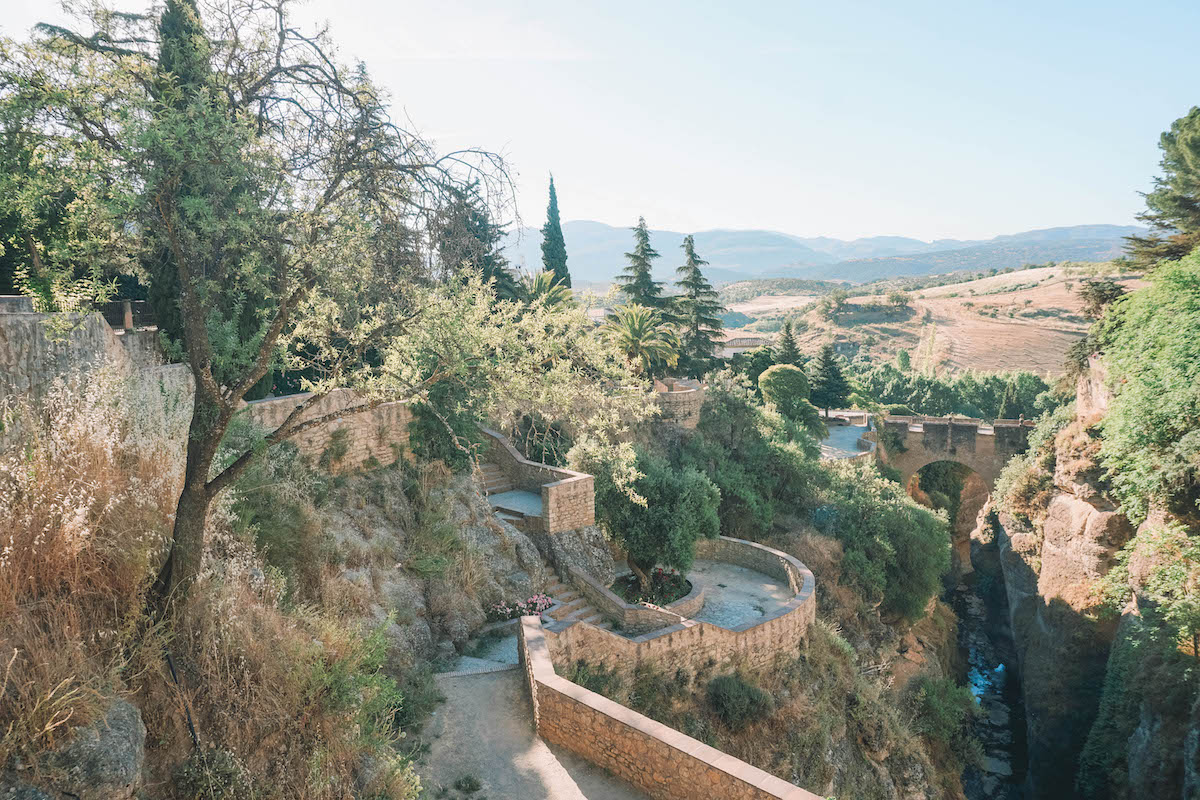
One of my favorite things to do in Ronda is explore the Jardines de Cuenca. They’re hanging gardens on terraces set over the El Tajo gorge, facing the bridge. The gardens were created in 1975 to celebrate Ronda’s sister city, Cuenca.
I visited the gardens near sunrise and took some incredible photos of the sun coming up over the bridge. If you have a passion for photography, I recommend doing the same! Be sure to keep an eye out for the kitties that call the gardens home, too.
8. Visit the Arab Baths

The Arab Baths (Baños Arabes) of Ronda are located near the former site of a mosque. Muslims went to the baths to cleanse themselves before entering the mosque, but they were also a place to relax and socialize.
The 13th century baths are divided into three sections: a hot room, a warm room, and a cold room. The barrel vaulted ceilings and star-shaped skylights have been remarkably well preserved.
9. Tour the Casa Museo Don Bosco
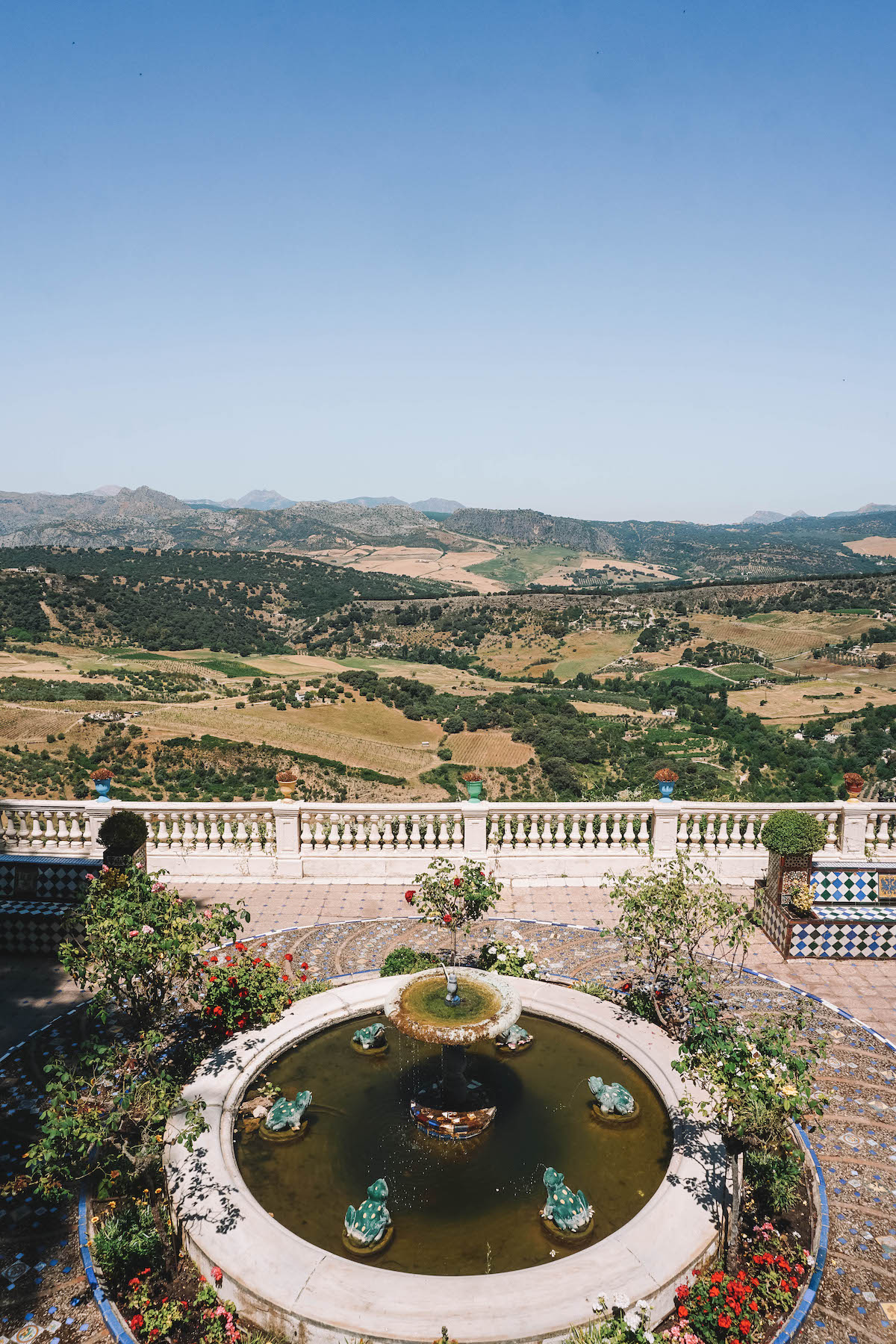
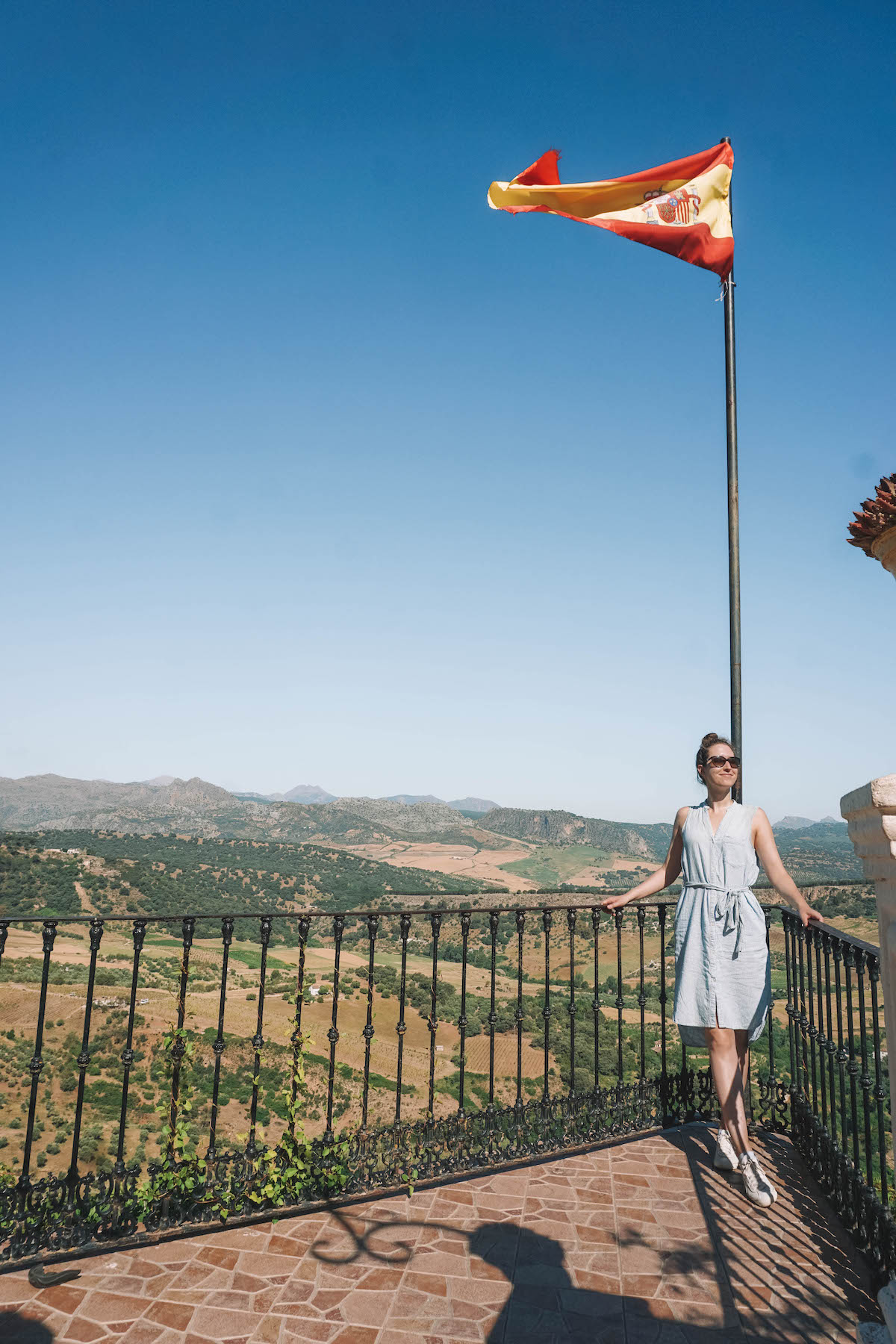
One of the best tourist attractions in Ronda is the Casa Museo Don Bosco. The house was built by Don Francisco Granadino Pérez and his wife Doña Dolores Gómez Martínez in 1850. The couple had no children, and after their deaths they donated the house to a religious order called the “Salesians of Don Bosco.”
The order was founded by Giovanni Melchiorre Bosco (i.e. Don Bosco) to help the underprivileged and is now the third largest Catholic order in the world. Once the order took over the house, it was opened as a sanatorium for the elderly and infirm and operated as such until 2008.
Now, you can tour the house and gardens. The house is very small but pretty, but the gardens are the main draw. The view of the countryside from the gardens of the Don Bosco House was my favorite in all of Ronda.
I arrived first thing in the morning and stayed for two hours just reading my book because I had the time to do so. During those two hours, just a few other people came by, so I got the feeling that the home is a bit of an underrated attraction in Ronda.
10. Scale the Arab City Walls
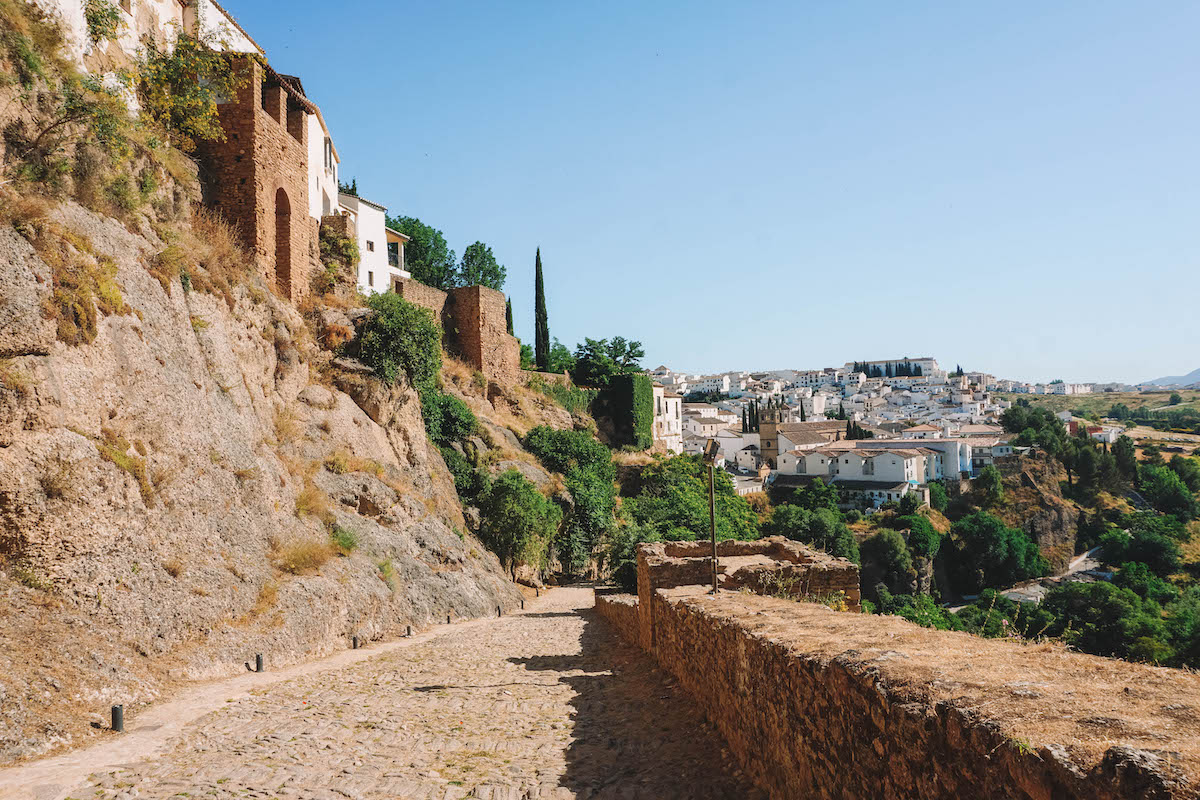
Under Islamic rule, Ronda was a prime defensive spot in Andalusia. As such, it needed sturdy walls and defenses to repel enemy attacks.
I mentioned the two remaining city gates already, but there are also old city walls around Ronda’s Old Town. The best preserved section is near the Puerta de la Cijara. Begin at the old city gate, then follow the path up to the Murallas de Levante. You can climb up the walls for a view, but be careful because the stone steps are narrow and have no railings!
11. Enjoy a Panoramic View From the Church of Santa Maria la Mayor
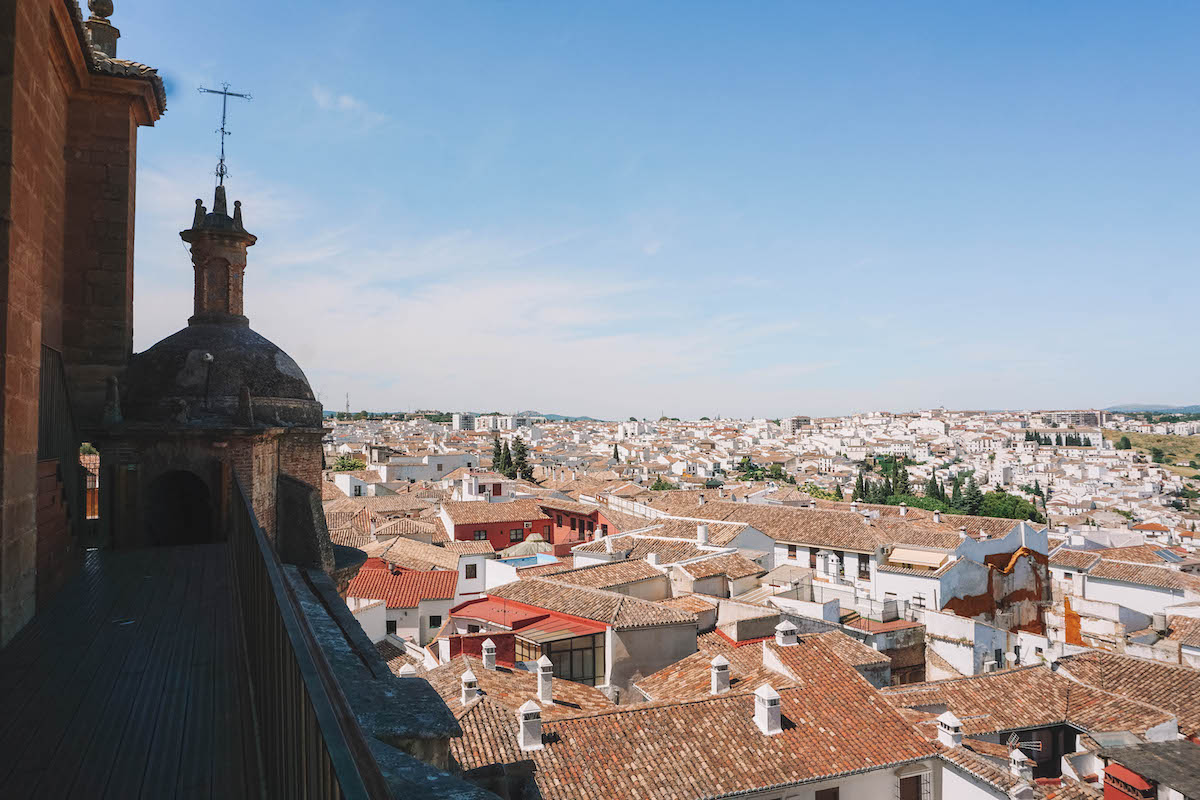
Built atop the site of a former mosque (which itself may have been built upon a Roman temple!), the Collegiate Church of Santa Maria la Mayor is a pretty church built partly in Gothic- and partly in Renaissance-style architecture. The church itself is nice to poke your head around, but nothing about the interiors particularly stood out to me.
However, the viewing platforms on the roof of the church offer an incredible view of Ronda’s Old Town and its surroundings! Many of the scenic miradors scattered around Ronda have views facing away from the town, so it was interesting to see the Old Town from above.
Before heading back down from the viewing platforms, be sure to enter the small door set into the church’s wall (near the door that leads back down the staircase and into the church). The door leads to a tiny platform within the church overlooking the high altar. It’s very cool, but also mildly terrifying to be up so high!
12. Walk in Hemingway’s Footsteps
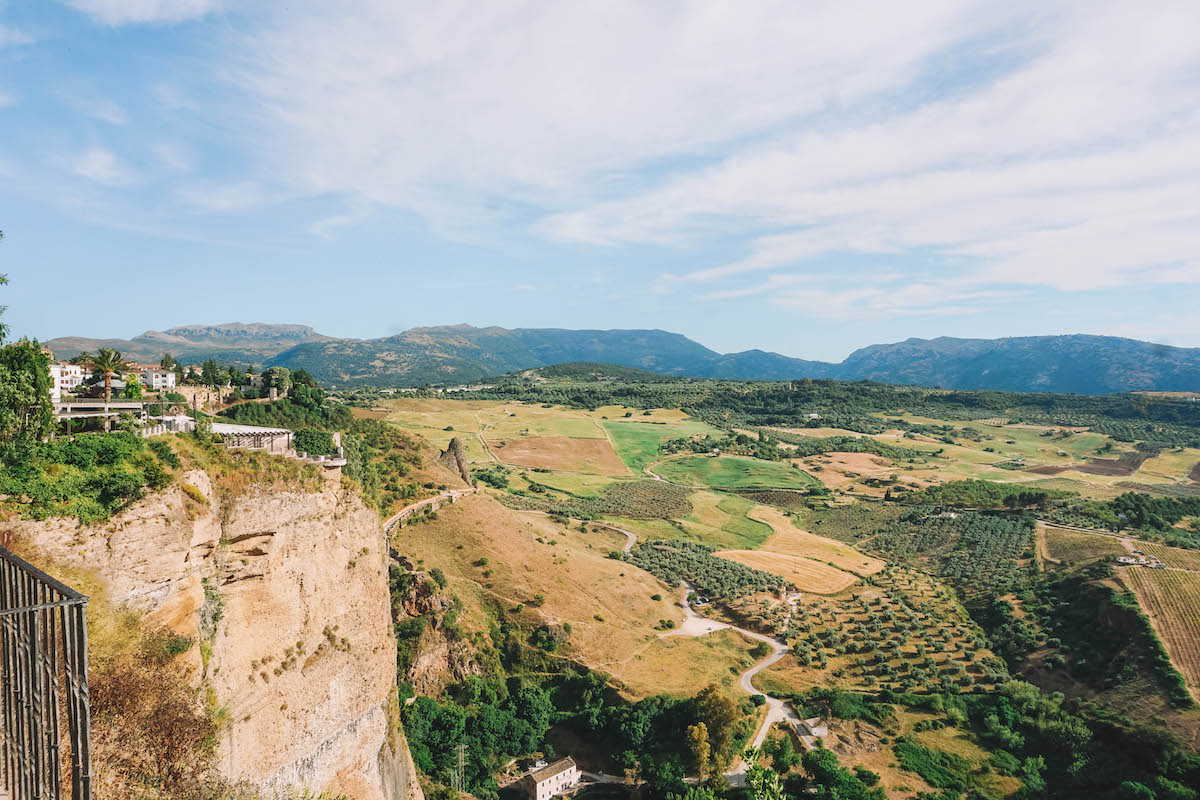
Ronda has played host to many well-known politicians, actors, and celebrities over the years. However, one of the best known was Ernest Hemingway, who visited Ronda multiple times and supposedly took inspiration from the small mountain town for his novels. The Ronda bullfighter Pedro Romero was thought to have been the inspiration for the matador in The Sun Also Rises, for example.
For a taste of Hemingway’s Ronda, take in the views along the Paseo de Ernest Hemingway. There’s also a sculpture of the author along the Paseo de Blas Infante.
13. Watch the Sunset at Plaza de María Auxiliadora
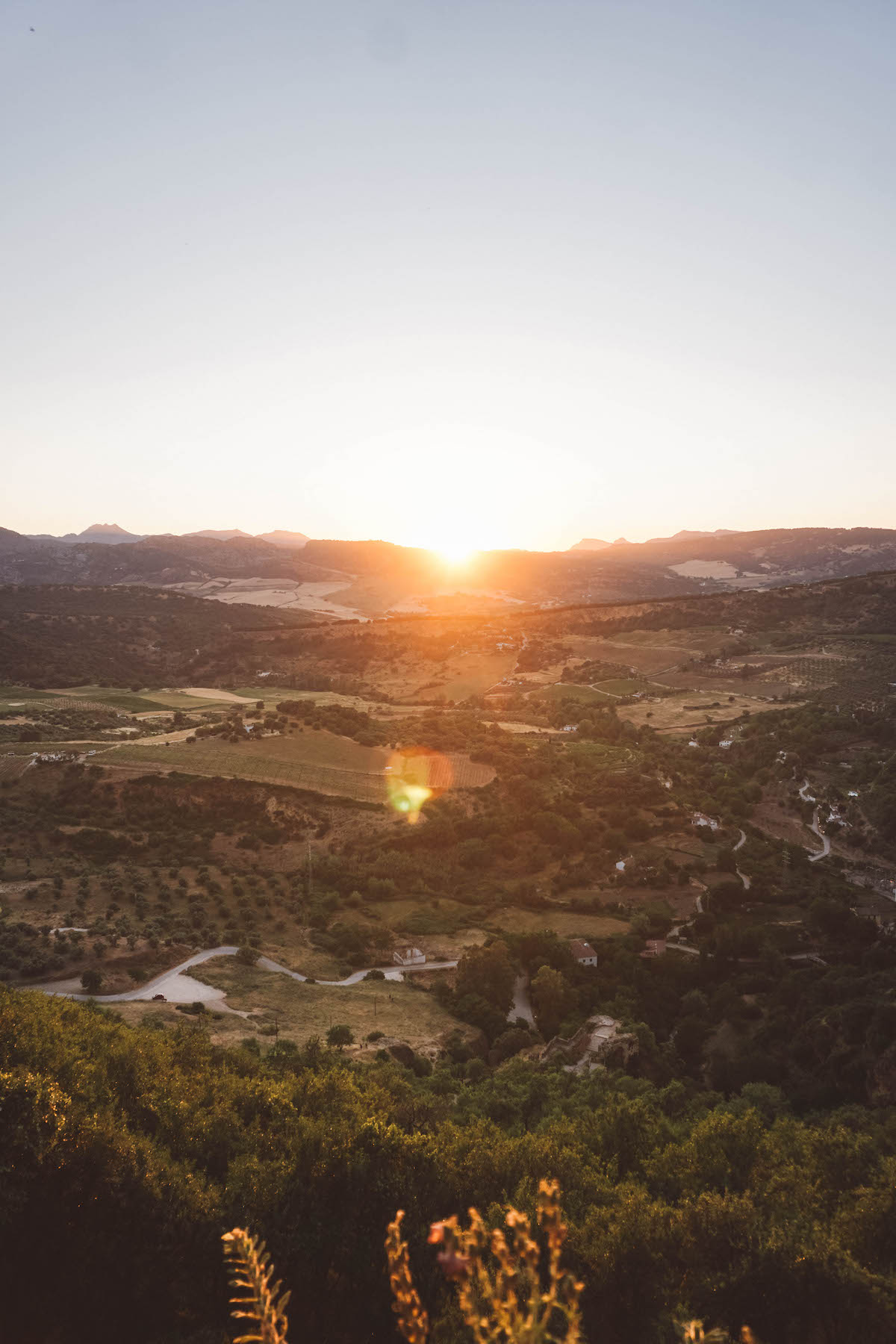
This small but pretty square is a mere blip on Google maps and as such may go unnoticed by many. It’s located near the trailhead for the path that leads down into the El Tajo gorge.
But don’t worry, I’m not asking you to do any hiking! Instead, find a spot near the iron fence about an hour or so before sunset and be prepared for the best show of your life.
Many visitors to Ronda assemble on or near the Puente Nuevo to watch the sunset. But while I was in Ronda, I thought it a shame to watch the sunset behind a man-made object when the surrounding countryside was indescribably beautiful.
So, I meandered away from the crowds and found this little square and experienced the most peaceful sunset of my life. Besides reading in the garden of Casa Museo Don Bosco, this was my favorite thing to do in Ronda!
Get Ready to Fall in Love with Ronda, Spain!
Whether you’re taking a day trip to Ronda or have more time to relax in this beautiful mountain town, I’m confident you’ll love every minute of your stay. If you have any questions about the best things to do in Ronda, leave me a comment below.
Don’t forget to follow me on Instagram to keep up with my daily adventures in Berlin and beyond!

Leave A Reply!